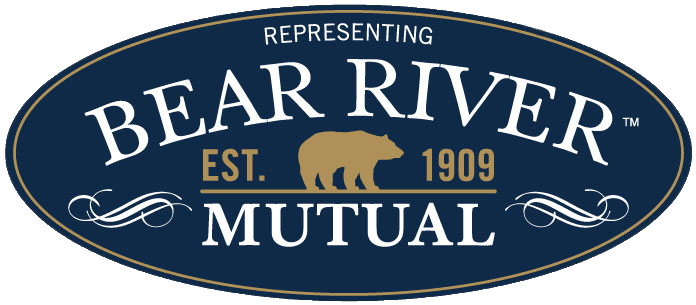Homeowners insurance is there to help minimize the financial impact of unexpected and costly damage to your property.
When thinking about how much homeowners insurance coverage you need, it’s essential to know there are different types of home insurance policies, kinds of coverage, and even exclusions to consider before investing in a policy.
To help you navigate the world of homeowners insurance, we are breaking down the ins and outs so you can determine the right amount of coverage for your situation.
Continue scrolling to learn more.
How to decide how much homeowners insurance you need: 7 things to consider
Many homeowners find deciding the right amount of home insurance coverage downright overwhelming and daunting. Thankfully, it’s actually easier than most realize. However, remember that the coverage levels and types each homeowner needs will vary based on their unique needs, wants, and situation.
In general terms, your homeowners insurance agent and company will have a tool that helps calculate the rebuilding cost of your property based on details such as size, location, custom features, interior finishes, and more.
Once your dwelling amount (the amount of coverage you will need to rebuild your house’s structure) is determined, that amount will serve as the basis for the levels of various other insurance coverage types.
For example, your personal property coverage is typically set automatically, generally between 50 and 70% of your dwelling amount. The same goes for loss of use coverage and other structures coverage, for which coverage percentages are usually set automatically based on your dwelling amount.
A homeowner and their homeowners insurance agent can adjust the policy if they feel like they need more coverage; however, the automatic levels are a great starting point for most.
Here are seven things to consider when determining how much homeowners insurance coverage you need:
1. Assess your property — The first step in determining how much home insurance you need is usually conducting a full assessment of your property. Insurance companies have their own metrics and tools for assessing your property’s value and potential risk.
But as the owner, it’s wise to have an overview of your house and what needs to be covered before investing in a policy. Some standard factors to consider are home age, size, features, and roof age.
2. Understand the difference between replacement cost and actual value — Home insurance companies have two ways of compensating you for damage: replacement cost value and actual cash value.
You may have the option to choose between the two settlement types, or you may be given one or the other automatically. However, understanding each of these is important, as it may help you set realistic exceptions in the event you need to file a claim.
Actual cash value (ACV) means that depreciation is considered for your claim settlement. For example, if your 10-year-old TV is damaged in a covered loss, your insurance company will pay you the actual value of your TV instead of what it would cost to buy a new one.
You might be able to choose replacement cost for bigger, better coverage, instead of ACV. This would pay you the whole cost to replace your TV, not just how much it’s worth. Replacement cost and ACV can apply to your home’s structure and property, or both.
If you are not sure what coverage type is best for you or which option is included in your existing policy, take the time to speak with your homeowners insurance agent.
3. Research local building prices — Buying homeowners insurance means preparing for damage or loss, so knowing how much it costs to repair or replace your house is key. Research how much building materials and labor will cost to restore your home to its current state or to build an equivalent property.
Factors that impact the amount of coverage your home needs include how many bathrooms and bedrooms it has, materials and supplies used in the construction, and special features. For example, if your kitchen showcases imported tiles, you may need higher coverage levels to protect it. Understanding these factors will help you determine if a company’s calculation of your property’s replacement value is too low or high.
One aspect of costs to consider is whether your house is up to current building codes. Generally speaking, most homes that are not up to code cost more money to rebuild. If your property doesn’t meet current codes, you may want to consider adding a law endorsement or ordinance to your insurance policy.
Following a covered loss, law coverage or an ordinance may help pay for the additional costs of bringing your house up to building code.
4. Research rental costs in your area — When homes sustain major damage, it’s not uncommon for homeowners to have to spend weeks, sometimes months, in temporary housing while the property is repaired. This is why many find it to be smart to look into how much it would cost for you and your family to rent an apartment or house in your area or stay at a local hotel.
Homeowners who live in an expensive area, like New York City, Honolulu, or San Francisco, might need more additional living expenses coverage (also referred to as loss of use coverage) than what a standard policy might include.
5. Think about how you use your house — How you use your house will help you determine the amount of personal liability or umbrella insurance you might need. For example, if you host get-togethers or parties frequently, you may want to think about a higher liability limit or even an umbrella policy to protect yourself in case someone is injured due to your negligence.
Suppose you have a pool (especially a pool featuring a diving board), trampoline, or swing set. In that case, you may want to increase your medical payments coverage, too, which pays for medical costs for your guests up to your policy limit, regardless of fault.
6. Take inventory of your personal items — In the event you need to file a claim for damage to your personal items, a home inventory can be extremely helpful. This includes:
- Name and description of belongings
- Purchase cost or ACV
- Date and place of purchase
- Receipts, if available
- Pictures or videos of items
- Estimated replacement cost
Keeping a home inventory will help make the claim process smoother. Your list should consist of everything you consider “valuable,” such as cash, jewelry, electronics, sports equipment, furniture, and more. Using online cloud storage for your inventory will ensure you always have access to your list if your house does sustain damage.
Determining your belonging value and replacement cost amounts takes time and needs to be given the necessary thought. Replacing items like coffee tables and dining chairs is relatively easy, but personal belongings like family heirlooms and fine art are often irreplaceable.
7. Consider your personal finances — Personal finances are a major factor when deciding how much you can afford to pay out of pocket to restore or rebuild your house or replace personal possessions.
Keep in mind that while most homeowners insurance policies include a provision that automatically increases coverage limits annually to keep up with inflation. In the event inflation rises significantly, your current limits might not be enough to properly cover you, and you might want to adjust your policy.
Most insurance professionals agree that it’s smart to carry enough coverage to rebuild your house and replace your personal items. However, some property owners have enough personal savings and may opt to cover more of their out-of-pocket costs in the event of home damage in exchange for lower home insurance rates.

Find your homeowners insurance policy at Bear River Mutual Insurance
At Bear River Mutual Insurance, we believe it’s wise to have a backup plan in place for when the unexpected occurs, and investing in a homeowners insurance policy is a fantastic way to prepare for the unexpected.
Understanding your policy and your homeowners insurance coverage is crucial, and our team is here to help you all along the way. If you need help finding the best, affordable insurance options for you and your family, it is best to reach out to a trusted insurance agency.
Insurance is an essential part of being a homeowner. Without it, your home, your loved ones, your personal belongings, and everything else you’ve worked so hard for are at risk. That’s why our knowledgeable and trusted professionals are here to help you find the best policy for you.
We also specialize in other types of insurance policies, including business, earthquake, renters, auto, and more. Regardless of where you are in your life, having safety nets in place can save you from financial ruin, and an insurance policy is a great place to start.
Bear River Mutual is an experienced insurance company with many decades of experience. You can find us in three convenient locations in Northern Utah that serve you better: Orem, Salt Lake City, and Provo. Contact Bear River Mutual Insurance today to get your free quote.




